Bill’s been back in touch with his small HO scale switching layout:
If you missed his ‘track-plan-pic’, it’s at the bottom of this post.
“Hi Al,
Bill from Virginia again. My first 4×8 section is nearly complete.
All basic scenery is in and now I’m adding in details and starting to weather the rolling stock and buildings.
Still a lot to do but I’m switching happily and having great fun!
Thanks again for your posting all of the talented modelers out there.
Your site and seeing what other do motivated me to get back into active participation in this great hobby. You don’t need a lot of space to have fun.
Attached is a link to my latest video. Trains are running and I give a quick overview of the layout as well.
Thanks!
Bill in Virginia”
Latest ebay cheat sheet is here
Now on to something completely different.
Who can help, Peter? Because I’m sure it will help quite a few of us:
“I know it’s been awhile but just wanted to drop a line and ask a question maybe you can answer or get some feed back for me.
Only have a few engines with DCC and some smoke, but I have found that they require a lot of power or you just can’t use your typical HO transfer.
I recently had a problem with a Broadway limited T1 4-4-4-4 steam engine DCC and the board burnt out for the second time first time got board from them to replace second time they wouldn’t help at all but here’s where it interesting, I dismantled the engine took out all the DCC and required the engine , just have to touch the transformer the engine takes off runs better then it did before just now no smoke or sound , runs awesome.
Don’t think it’s fair that the new technologies should cost us so much money because now a family hobby has become more about money than creativeness , MTH for one I’ve found out that there engines work properly only with there equipment, is that fair , that why I only have 1 engine by them and I don’t even run it because it don’t run well off my transformers.
Thanks for listing hope to hear from and keep send out those emails from other hobbyists , there great.
Peter”
Please do let me know your thoughts on this – just leave a comment below if you can help.
A huge thanks to Bill for sharing his small HO scale switching layout – loved his video and can’t wait for the next update.
It’s been wonderful to see its creation right from the very start. Stunning stuff. He’s right too, you don’t need a lot of space to have fun. You just have to start.
That’s all for today folks.
Please do keep ’em coming.
And if today is the day you get started on your layout, the Beginner’s Guide is here.
Best
Al
PS Latest ebay cheat sheet is here.
PPS More HO scale train layouts here if that’s your thing.

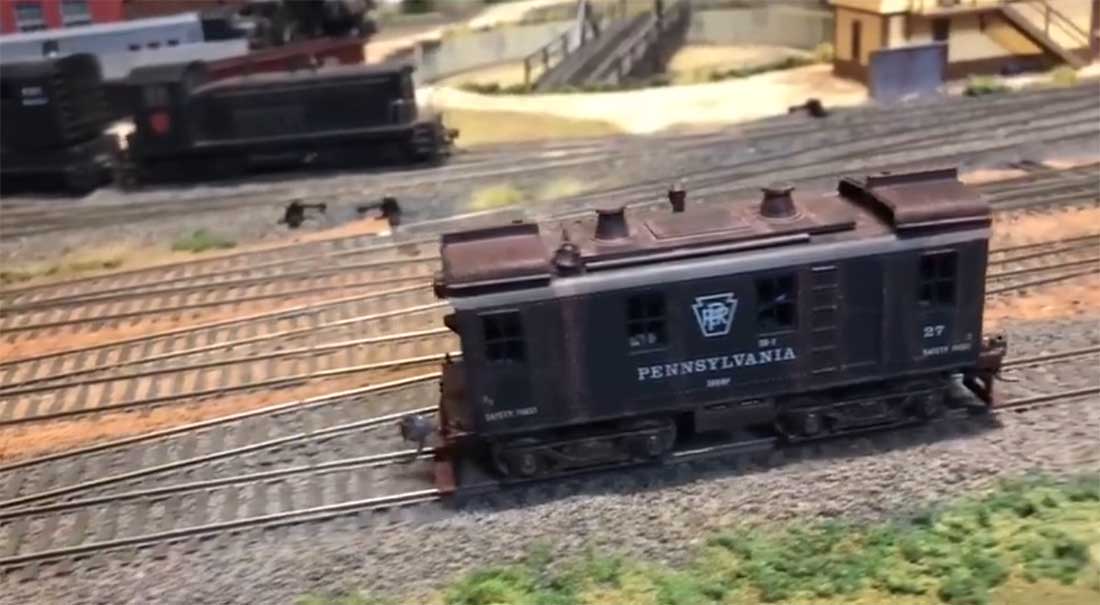
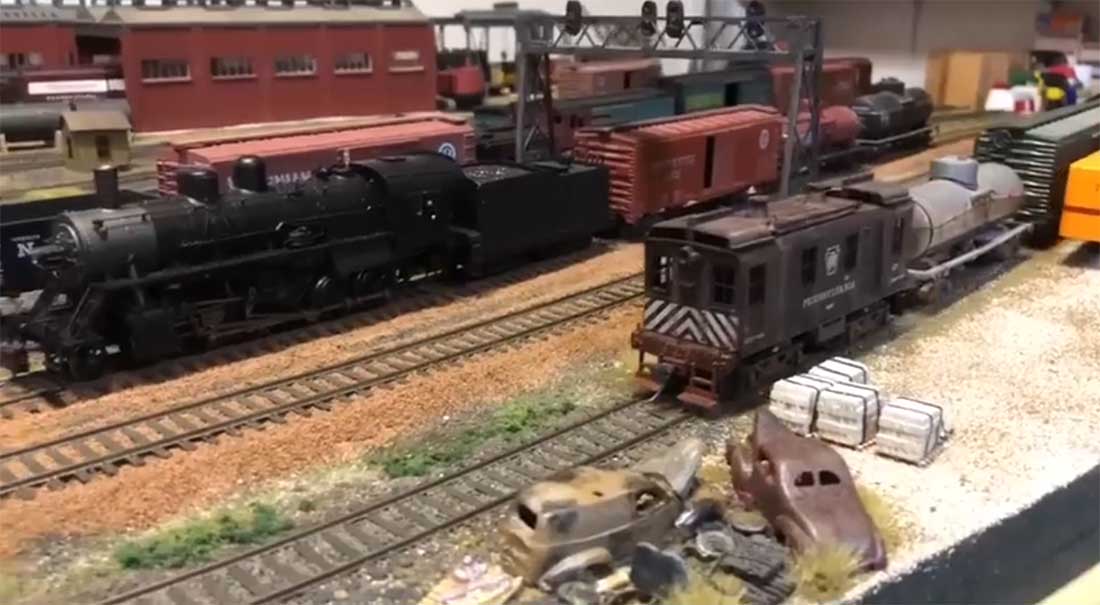
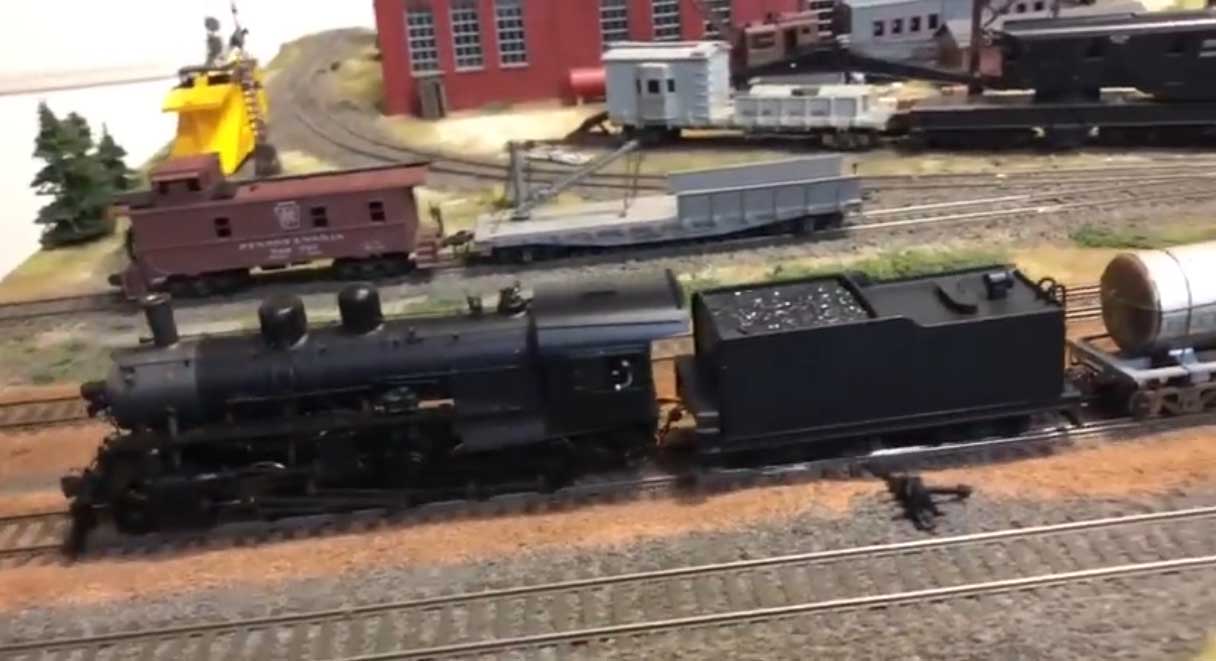
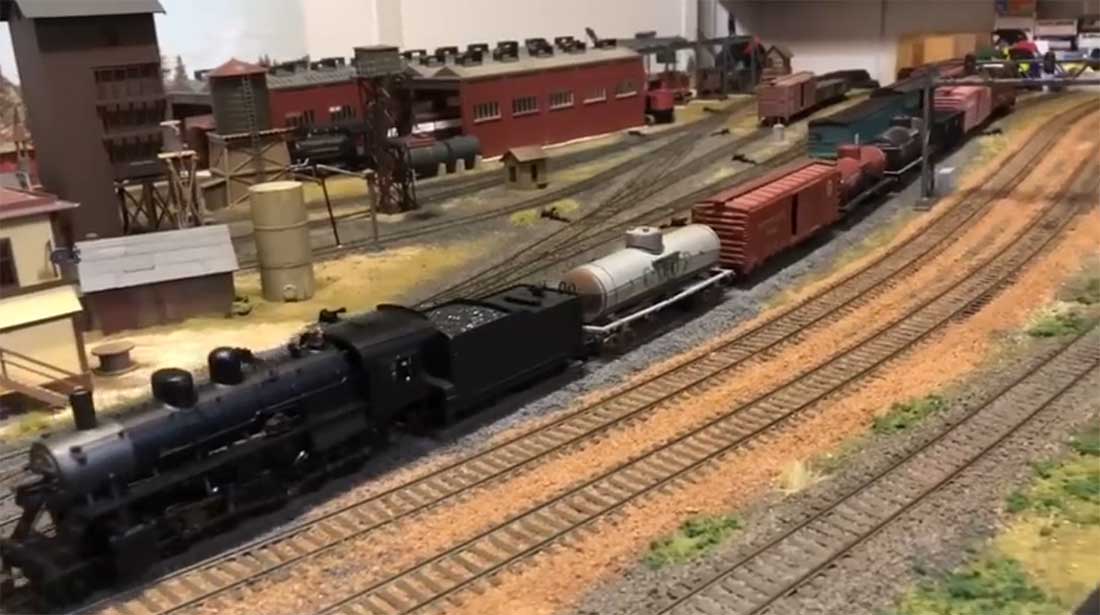
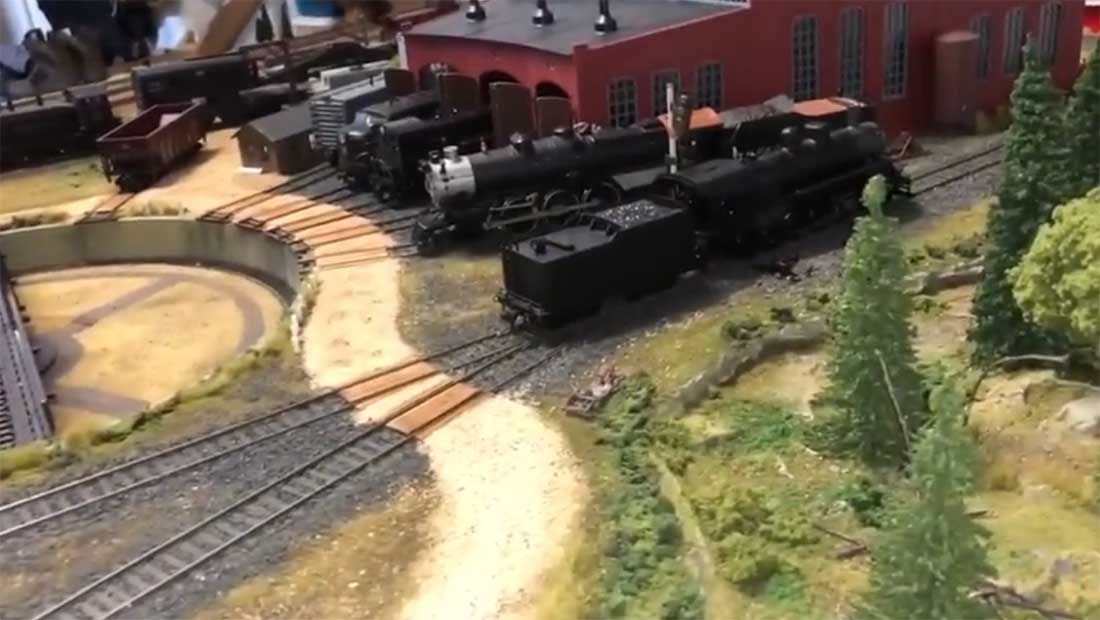
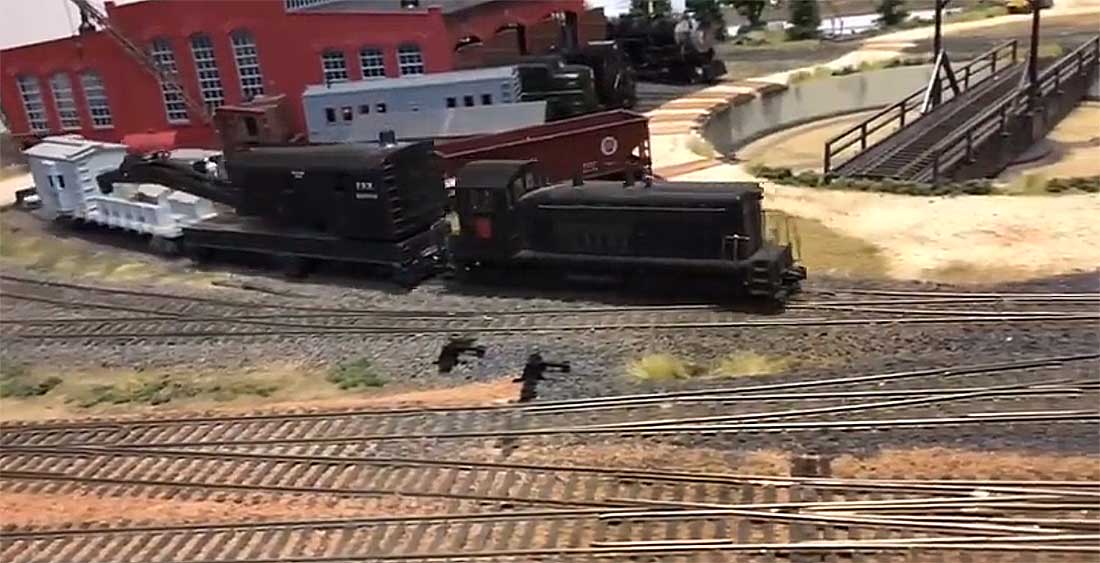
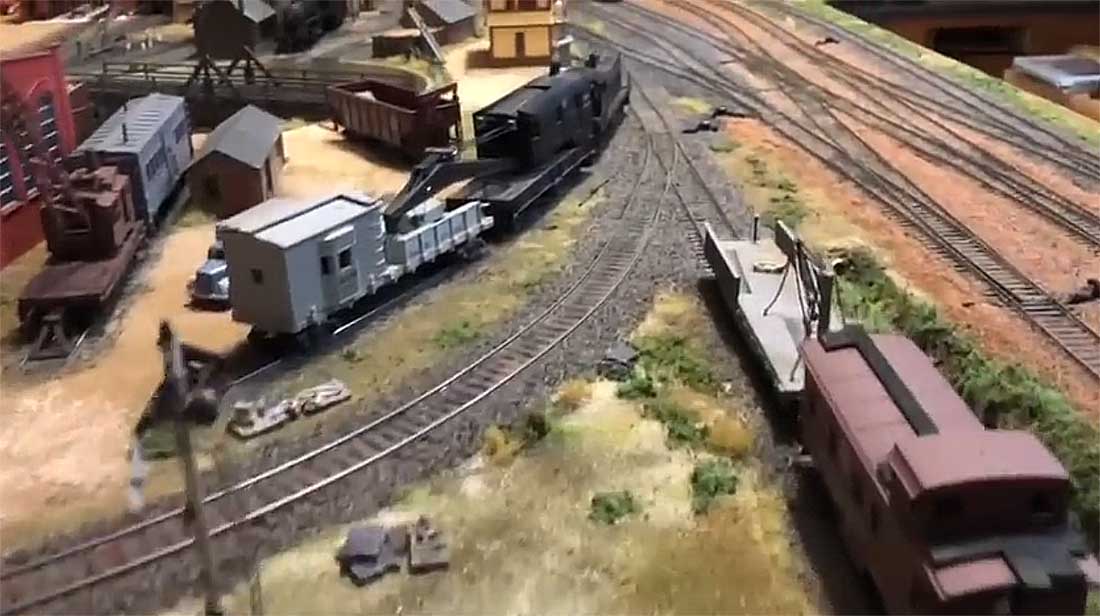


when ever you add a option to the engine of a train you have to give up something in this case smoke is a heating element that will use power to the motor. i have not changed over to dcc I still like the old dc trains.
I tell ya, I know what Peter is going through, on the DCC thing. I have a maybe 20 or so locomotives, way more than I need for my track plan, but I like them, they’re like old friends waiting for me to ask them to help with a train. I simply don’t have $2,500 to drop into locomotives and re-wiring my tracks. I also hate the idea of learning DCC code, (I hated DOS and it reminds me of that!!) All that programming numbers for throttle settings, bells, lights and a host of other stuff. Ring Engineering has radio controlled DCC and eliminated many of those problems, but still looking at over $2K and a ton of tedious re-wiring. So here is what I’ve decided – to heck with DCC. I’m going to do block wiring, dead sidings until a simple switch powers them, and battery LED lighting on a few selected locos. I may try to figure out sound, but it will be DC only, more voltage, more noise. I’m also waiting for someone to perfect battery/radio command. No track wiring, except for a length of track where batteries are re-charged. Good luck Peter, and thanks Al.
Switching or as we call it shunting can be great fun , nice overview of your layout …Dangerous Dave
Hi Peter
From the UK I actually have over ten locomotives but only run two at a time, but I use Lionel trains with their legacy control and yes I am tied in a way to one particular marque not that I regret it as it does cost a lot more than my old OO hornby trains. I only used dcc once but never got on with it.
Stick with a brand you can trust and who give great service. (Even from this side of the pond, Lionel have been great.)
Wow! That switcher you show has a lot of history! It looks very much like the first dieselelecttic switcher. It was built buy Ingersol Rand at thier Phillipsburg,N.J. Plant in the early 1920,s in conjunction with General Electric and Alcohol, With the first nr.1000 being leased to CNJ. I never saw a Pennsylvania logo on one but !
Bill, Loved the switching, looks great fun, as you are using KD couplers have you put in magnetic uncouplers or is it the “hand of God”?
WRT to Pete’s problem, I am relatively new to modelling and run my 6 locos on DCC, I find that I can comfortably run 4 locos simultaneously and also control and operate my 24 switches through DCC. Although I have never done DC block switching, it seems very complex compared to DCC. As Jacque says the smoke producing part of the loco can use relatively more power than the loco itself, also lighting can be quite a drain, especially if applied to all passenger carriages and using none led lighting. Before abandoning DCC completely have you tried running the loco on its own and measuring the current drawn to see if this is within specified limits and not drawing excessive power, if this is ok then steadily add more locos/features monitoring the current drawn. If the DCC system can not provide sufficient power, split the layout into 2 or more sections powered by different power units, but controlled through 1 DCC controller. Hope this makes sense and that I’m not saying stuff you already know!
Very nice 4 x 8 great looking scenery , very well done..
Peter
I have several MTH steam engines with DCC and 2 Bachman engines with DCC and they all run very well on my Digitrax layout. I do have a loop and connections to my track every 6′ to make sure there is no power drop on my layout. Check your layout for voltage drops when running your engines.
Wonderful layout, Bill. I can see where the time slips away as you go back in time.
Peter, well understand your dcc issue. I kept with DC, as I had some older engines that wanted to use. I will use a block system to control them.
To John, there are several DC sound options out there that give you the opportunity to add sound to your layout. If you use Al’s Ebay link a MRC 7000 has some nice sound as well as having some very good control options like momentum, brake and nudge. You can also find the MRC 210 that has 10 programmed sounds in it. Not as sophisticated as Dcc, but not a bad substitute. You can see how they sound on various YouTube sites. There are some out there, but all options don’t stay long as us ole DC folks gobble them up.
I know a lot of folks like switching. Joined a model railroad club and they did the whole shebang… dispatchers ..the works. Doesn’t particularly appeal to me. My thrill is building and designing the layout. Like John Frye I have more than a dozen loco’s and the cost of converting to DCC would be prohibitive. Something like 250 per loco ( I model German).
Two comments:
1. DCC wiring is electrically more demanding than DC wiring. A layout that runs happily with high-numeric gauge supply wires in DC may not be so happy when converted to DC. For most applications, the main DCC bus should not use a higher gauge than 12. And you will need more feeders to the layout than you can get by with using DC.
2. My N gauge experience with Broadway Limited is that they design their locomotives with little headroom above the power spec of the decoder. The result is, with either bad wiring or sitting awhile or …, the decoder’s internal circuit breaker trips regularly, making for an annoying machine indeed. The Baldwin Centipede is particularly bad at this, I bought five, returned two, and the ones I kept were because I couldn’t return them. All will, when taken out of the box, move an inch or less, trip the breaker, and go through an internal restart. Repeatedly. They are very pretty but electrically inadequate, a tough problem for the addicted modeler.
Generally, though, DCC locomotives are reliable and not at all like some of the comments above. I own over 250 DCC locomotives and only a small percentage have issues, most of which they came to me with. I’ve installed the decoders in the majority of these myself, which is not difficult in most cases and inexpensive except for the time to do it, which I believe we call a “hobby” 🙂 . My “Go To” decoder is the Digitrax DZ-126, which is tiny, so it fits just about anywhere, and reliable.
Most of the decoder failures I’ve had are DOA pre-installed decoders. The TCS ones Bachmann uses in smaller steam locomotives (e.g., 4-6-0) are of low quality. One of mine runs only backward at full speed and does that as soon as you put it on the track. I have not been able to reprogram it, so I assume a faulty decoder. Which is highly integrated with the tender pickups so a bit difficult to replace.
Summary, if you had a bad experience with DCC, it’s likely you did not follow the directions. Don’t blame the technology for your improper use of it. The DCC advantage of controlling the locomotive on larger layouts is a big plus whether or not you are using block control DCC. And no, you do not need to learn a new language to use DCC. I haven’t, the NCE unit’s programming mode is clear and in English. Like all DCC, it uses CV values, but you do not need to know them to perform even complex programming like advanced consists.
That’s one lovely little model railroad. Nothing beats a well constructed switching layout.
HI Peter and all with DCC issues:
First Peter, you mentioned that the Broadway limited is not running correctly on
DCC. The Broadway limited has some issues that are easily fixed. One of my Broadway limited engines had a bad wire to one of the power trucks, Took some time to find the bad wire, but once fixed the engine is running great.
For those of you who are having an issue with DCC, here are some thoughts that may help. If you are using NCE, MTH, these units will work well with their own decoders,. However DIGITRAX works with any decoder, NCE, MTH,. TCS, DIGITRAX, LENIS, etc. If you are having an issue programing your engines, try JMRI (JAVA MODEL RAILROAD INTERFACE) using the SPROG. JMRI is a real cool way to program all engines from all manufactures, from running, to lighting effects, sound, etc…. You can download JRMI from the internet, free of charge. The SPROG is an affordable connection you need to connect from the program track to JMRI. You can find information regarding the SPROG on the internet, just type in SPROG and it will find the link for you.
Hope this helps
Caution: All DCC locomotives do not necessarily work with DC. It seems to me that you describe your layout as working with DC: you talk about transformers (DC) and not boosters (DCC). A DCC locomotive must be programmed to operate with DC whenever possible, as all DCC decoders can not operate on DC.
Usually, when a decoder is DC compatible, it is programmed by default to be able to work in DCC AND in DC, but again, it is necessary to check if it is compatible and if it is actually programmed to work in DC. Finally, according to the NMRA standard, it is bit 2 of CV 29 which makes it possible to operate a decoder DCC in DC: if the bit is at 1, the decoder will work in DC and DCC, if it is at 0 il will only work in DCC. Now, will a DCC decoder burn systematically if we put it on DC? I have not done and will not experience … My layout (over 70 locomotives) and my club in Montreal (which is almost 70 years old) has been operating in DCC since the early 80s, does not seem have had such an adventure.
My two cents again. As for the space required, the manufactures’ more than likely design to their largest or most different loco that they manufacture. They also design to leave parts out if they don’t need them if a feature is not ordered.
It’s a cost thing. Most PCB’s (Printed Circuit Boards) are very costly to manufacture. If they place the components robotically, it takes a lot of engineering expertise to program the robot. If manufacturing the PCB’s is done again robotically, again someone has to feed the robot.
The final PCB cost is a wave soldering machine. I’m not going to get into what that is; you can look it up on the internet. I am not sure just what they are using now-a-days because of no lead requirements; whatever it is, Ill bet that it’s close to lead and costs more per pound. It is usually kept near or at boiling point, or close to it and usually 24/7.
And how about the cost of buying every new loco or car that gets released with DCC capabilities? The manufacturer of the PCB isn’t going to hand over the drawings or the specs.
Don’t forget cost of material plus profit and overhead.
In conclusion to the above, the main reason DCC and interchangeability usually don’t exist is $$$! The sort of rule of thumb is that 1 PCB costs just as much as 10,000 or there about
What a great switching layout. It will give you many hours of fun. One thing you might consider is adding a portable fiddle yard. Then you could sort inbound/outbound trains. Model Railroader had a good one in the Winston-Salem layout. Also, look at the Rice Harbor layout.
This article and comments have helped me decide to stay with the old fashioned method of using electric blocks and switches for my proposed layout. The cost would prohibit me with the number of engines I own and I actually enjoy wiring. I had a temporary layout about 40 years ago that I had a separate switch to control the light in each of the 25 buildings.
WOW ! Very impressive. One of the best I have ever seen !! Thanks for the tour.
Hi Peter, what DCC system are you using, and also what power supply?. A DCC power supply should provide between 14 – 18 volts ( on average, as some manufacturers vary ), so the decoder can provide 12vDC to the motor. If underpowered, the motor cannot run reliably. I have a T1 4-4-4-4, but I have disabled the smoke feature, as it draws too much power, and the smoke looks unrealistic.
Barry, from a land downunder.
beautiful layout, but I can’t see why your switcher engines were moving so fast ?
a very good shunting video. thanks for sharing. don’t know anything on the DCC problem
Great layout. I ask, where will you put additional structures. You seem to have used every square inch for trackage?
Great layout, with great scenery!
One thing I think I noticed is that your tracks can allow cars to leave the table.
You were VERY careful not to let that happen in your video. Would you consider adding bumpers where tracks leave the layout edge – just to be SURE cars or locos never “take a dive”?
I run Bachmann, Atlas, and other makers of Engines on Kato snap track, and have NO problem running them on just DC.